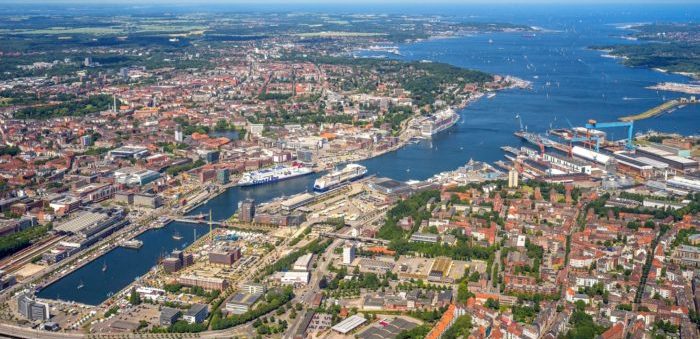The construction of the first onshore power supply plant for commercial vessels in the Port of Kiel has started. As of spring 2019, big cruise ferries will be able to be supplied with the electrical power they need during the time they are berthed in Kiel.
The onshore power supply plant for the Norwegenkai is part of the BLUE PORT concept: The Norwegenkai onshore power plant, the Schwedenkai Terminal and the Cruise Shipping Terminal Ostseekai will also be equipped with onshore power supply facilities by 2020. The Port aims to provide half of all ship calls in Kiel with onshore power in future.
[smlsubform prepend=”GET THE SAFETY4SEA IN YOUR INBOX!” showname=false emailtxt=”” emailholder=”Enter your email address” showsubmit=true submittxt=”Submit” jsthanks=false thankyou=”Thank you for subscribing to our mailing list”]
In addition, this onshore power supply plant will reduce the levels of NOx and particle matters that are being emitted in the port area. In addition, less carbon dioxide will be emitted as well.
The Norwegenkai onshore power supply plant has a maximum power rating of 4.5 Megawatts (MW) at 10 Kilovolt (KV) and a network frequency of 50 Hertz (Hz).
Lars Nürnberger, head of Kiel’s Siemens AG branch office, noted:
The plant is tailored to the needs of the port and the shipping company. As a result of its high power rating in combination with a daily operation, a high environmental benefit can be achieved. In future, emissions on site will equal zero.
The plant will also have a land-to-ship power transfer station (PLUG), alongside the air-insulated, metal-clad, medium voltage switch-board. The PLUG power transfer station incorporates a programmable controller (PLC) which communicates with the medium voltage switchboard in the onshore power sup-ply station.
Switching procedures communicated by the ship via the interface are performed automatically. Before the power transfer from shore to ship takes place, the system checks the functionality of all plug and cable connections. After thus, the onshore power connection is switched on. The ship then synchronises itself with the onshore power plant which replaces the on-board power supply.






























































